Caishiji Scenic Area is located in Yushan District, Ma'anshan City, Anhui Province, on the southern bank of the Yangtze River, about 5 kilometers away from the center of Ma'anshan City. Covering a total area of 3.92 square kilometers, it belongs to the subtropical humid monsoon climate, featuring distinct four seasons and concurrent rain and heat periods. It is a National Key Scenic Area and a National 5A-level Tourist Scenic Area. Characterized by the landscape of "The great river winds around the sheer cliff, and the Sage of Calligraphy accompanies the Immortal Poet", with the poetic conception of Li Bai, a poet of the Tang Dynasty, as its soul, and taking the cliff landscape of "The green snail rises from the great river" along the Yangtze River, the Suoxi River and the Binjiang Wetland Scenic Belt as the main carriers, it integrates natural scenery, war culture, religious culture and humanistic history. There are more than 100 various buildings in the scenic area, including iconic structures such as Taibai Tower, Santai Pavilion and Guangji Temple, making it an important window to display the Yangtze River culture and poetry culture.
Historical Culture
Caishiji has a long history, and there are various theories about the origin of its name. According to legend, there is a stone cave under Caishiji, which is bottomless and connected to Dongting Lake. Someone once saw a golden cow in the cave, which is the story of "The golden cow emerges from the shoal"; later, during the Chiwu period of the Eastern Wu in the Three Kingdoms period, a monk dug a well here and accidentally obtained colorful precious stones. To commemorate this event, the place was renamed "Caishiji".
Due to its superior geographical location, standing at the throat of the Yangtze River, Caishiji has always been a strategically important place for military strategists. More than 20 famous wars have taken place here, such as Sun Ce crossing the river to attack Niuzhu, Sima Yan destroying Wu and capturing Sun Hao, and Chen Houzhu sending troops to fight at Caishiji. Since the late Eastern Han Dynasty, generals have stationed troops here. In the Eastern Jin Dynasty, Niuzhu City was built; in the Zhenguan period of the Tang Dynasty, "Caishi Garrison" was set up; in the Song Dynasty, the ancient Niuzhu City was rebuilt; and in the Ming and Qing dynasties, a patrol department was established here, leaving rich relics of military culture.
Caishiji is also a gathering place for literati and poets. Li Bai, Su Shi, Lu You, Wen Tianxiang and other poets of all dynasties once stopped here to recite poems, leaving thousands of poems. Among them, Li Bai visited Caishiji many times and wrote immortal poems such as "Niuzhuji" and "Looking at Tianmen Mountain". According to legend, he drowned in the Yangtze River after drunkenly trying to catch the moon at Caishiji. Later generations built Taibai Tower, Zhuoyue Platform and other buildings to commemorate him, forming a unique poetic cultural atmosphere.
Main Attractions
Taibai Tower
Originally named Zhexian Tower, Taibai Tower was first built in the Yuanhe period of the Tang Dynasty. The existing building was rebuilt in the third year of the Guangxu reign of the Qing Dynasty (1877), and it is one of the earliest existing buildings in China to commemorate Li Bai. The tower is a three-story pavilion, 18 meters high, with a construction area of more than 400 square meters. Adopting the traditional Huizhou architectural style, it has overhanging eaves and upturned corners, as well as carved beams and painted rafters. Inside the tower, there are displays of Li Bai's statues, stone inscriptions, calligraphy and paintings, showing Li Bai's life story and poetic achievements, and it is an important place for tourists to cherish the memory of the Immortal Poet.
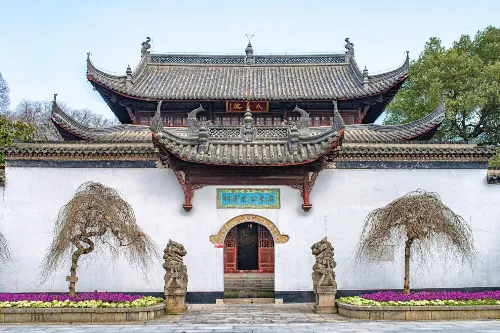
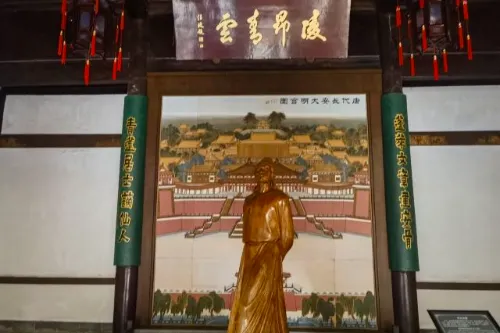
Santai Pavilion
Santai Pavilion is the highest point of Caishiji. First built in the Wanli period of the Ming Dynasty, the existing building was rebuilt in 1999. It is a five-story pavilion imitating the architectural style of the Ming and Qing dynasties, 31.9 meters high. Climbing up Santai Pavilion, visitors can overlook the scenery of the Yangtze River 360 degrees, with a broad view of Ma'anshan urban area and the southern Yangtze hills, presenting a magnificent scenery. Inside the pavilion, pictures of Caishiji's historical culture and natural scenery are displayed, making it an ideal place for tourists to climb high and look far, and take photos as souvenirs.
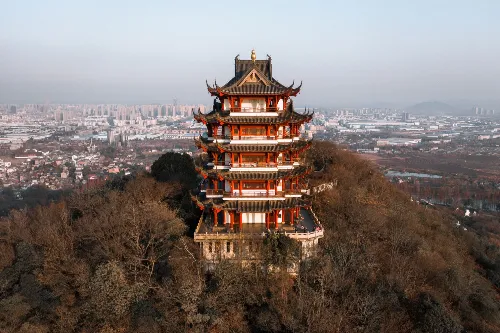
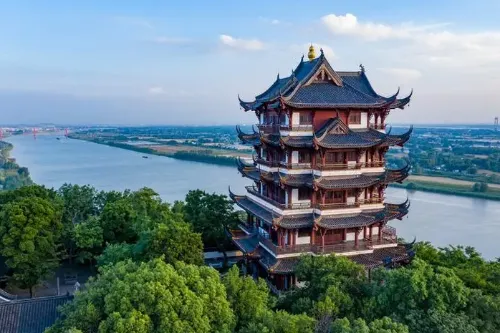
Lin Sanzhi Art Museum
Covering an area of 3,800 square meters, the art museum has an elegant and novel architectural style. It consists of four parts: the main hall, the auxiliary hall, the academic hall and the cemetery. The roof of the main hall is covered with thatch, also known as "Jiangshang Caotang (Grass Hall on the River)", which mainly displays more than 100 pieces of fine calligraphy and painting works of Mr. Lin Sanzhi from different periods of his life. The auxiliary hall mainly exhibits the seals and articles commonly used by Mr. Lin during his lifetime, as well as works by his teachers and friends.
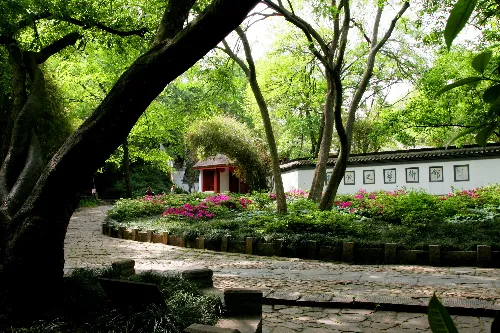
Yan Garden
Covering an area of 2,000 square meters with a construction area of 1,225 square meters, Yan Garden is mainly one-story with a partial two-story structure, featuring a courtyard-style layout, gentle sloping roofs, a grand and extended appearance, simple and elegant style, and Tang Dynasty architectural characteristics. Among them, the main exhibition hall is 290 square meters, each of the two auxiliary exhibition halls is 60 square meters, and the multi-functional conference room is 180 square meters. Here are displayed 72 ancient Chinese ink slabs donated by the famous collector Mr. Ji Hanzhang and fine calligraphy and painting works by contemporary famous artists.
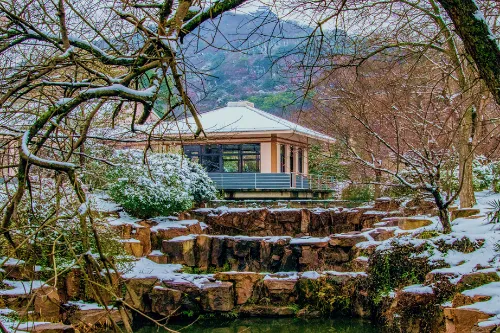
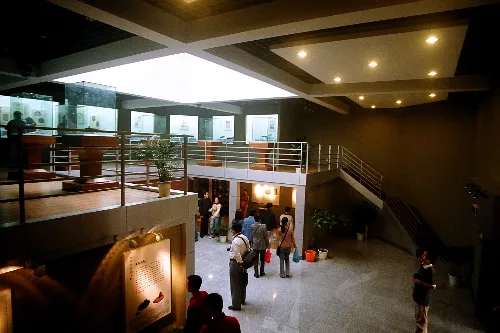
Sanyuan Cave
Also known as Sanguan Cave or Sanguan Hall. "Sanguan" (Three Officials) are legendary gods worshipped in Taoism, namely the Heavenly Official, the Earthly Official and the Water Official. The Heavenly Official bestows blessings, the Earthly Official pardons sins, and the Water Official relieves disasters. Taoism matches the Three Officials with the Three Yuans, namely the Shangyuan Heavenly Official, the Zhongyuan Earthly Official and the Xiayuan Water Official. The Three Yuans and the Three Officials are of the same meaning, being the gods worshipped by Taoism.
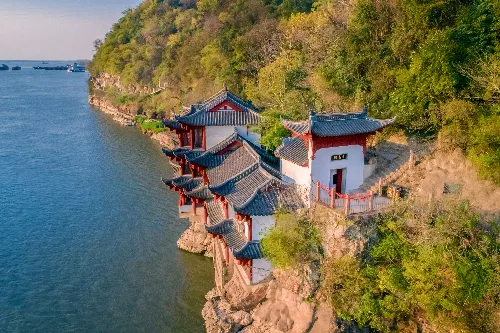
Binjiang Wetland Park
Binjiang Wetland Park is adjacent to Caishiji in the north and the Yangtze River in the west. The Ma'anshan Binjiang Ecological Wetland Park where the poplar forest is located has set up 10 viewing platforms along the 5,670-meter garden road, forming an ecological landscape of "one poplar forest, two connected water systems, two ring-shaped plank roads and three entrances/exits".

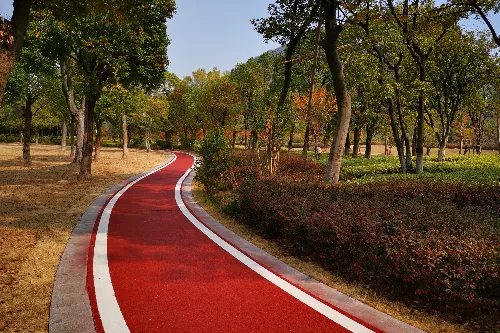
Baoji Mountain
The seal character "Baoji Mountain" engraved at the foot of the mountain during the Zhengde period of the Ming Dynasty is the earliest record of it. It got its name because the mountain is covered with numerous exotic stones, like countless pearls and precious stones piled up. It is located north of Caishi Town, Ma'anshan City, Anhui Province. With an altitude of 208 meters, a relative height of 58 meters, a length of 350 meters and a width of 120 meters, the mountain covers an area of 7.75 hectares and is shaped like a coiling dragon.
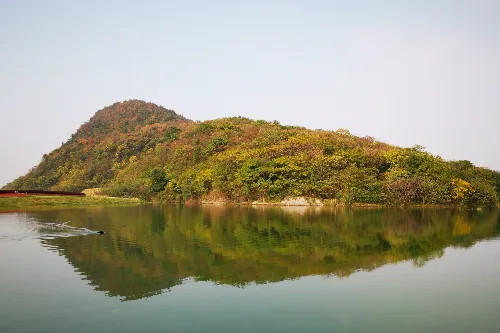
Cuiluo Bay
Located in the southwest of Caishiji Scenic Area, it covers an area of 200,000 square meters, including 50,000 square meters of water area. There are 2 stone arch bridges, 3 wooden flat bridges and 1 stone flat bridge, with a total construction investment of 20 million yuan.
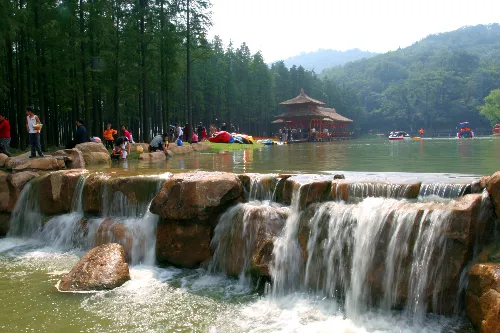
Zhexian Garden
With the style of Jiangnan gardens, Zhexian Garden takes the stories of Li Bai in Anhui, Dangtu and Caishiji as its content, highlighting Li Bai's simple personality charm. The garden adopts various expression techniques, accompanied by sculptures such as "Grinding an iron pestle into a needle" and "Farewell at Peach Blossom Pool".
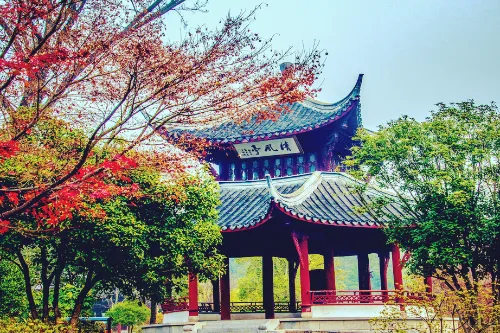
Tour Routes
Hiking Route: East Gate → Li Bai Memorial Hall → Sanyuan Cave → Santai Pavilion → Binjiang Park.
Sightseeing Bus Route: North Gate → Cuiluo Bay → East Gate → Taibai Tower, Li Bai Memorial Hall (get off and walk) → Emei Pavilion → Sanyuan Cave → Santai Pavilion → Woniwei (Snail Tail) → North Gate.
Travel Suggestions
- It is recommended to enter the scenic area at around 8 a.m. to avoid tourist peaks and enjoy a quiet visiting environment.
- Wear comfortable sports shoes as there are many steps and walking sections in the scenic area for easy sightseeing.
- Carry drinking water and a small amount of snacks, as there are few shopping spots in the scenic area with relatively high prices.
- Pay attention to sun protection and heatstroke prevention in summer, and keep warm in winter, adjusting your clothing according to the weather conditions.
- It is recommended to hire a scenic area interpreter or learn about the historical background of the attractions in advance to better experience the cultural connotation.
- Reserve enough time to visit Binjiang Wetland and enjoy the beautiful sunset scenery over the Yangtze River.
Notes
- Abide by the scenic area regulations and do not climb dangerous areas such as sheer cliffs and ancient trees at will.
- Protect the scenic area environment, do not spit or litter randomly, and take good care of cultural relics, historic sites, flowers and trees.
- When visiting riverside attractions such as Zhuoyue Platform, pay attention to safety, take good care of the elderly and children, and avoid getting close to the cliff edge.
- Some sections of the scenic area are relatively steep, so it is recommended that the elderly and children visit accompanied by their families.
- If you need to take photos of cultural relics or exhibits, please check whether photography is allowed in the scenic area and abide by relevant regulations.
- In case of severe weather or special circumstances, the scenic area may temporarily close some attractions or adjust the opening hours, so please pay attention to the scenic area notices.
Transportation
- Bus: Take Ma'anshan Bus Routes No. 4, No. 4 Night Shift, No. 101, No. 109, No. 117 and get off at "Caishiji" Station to reach the scenic area directly.
- Taxi: It takes about 15 minutes to take a taxi from the downtown area of Ma'anshan to Caishiji Scenic Area, with a fare of approximately 15-20 RMB.
- Self-driving: There is a parking lot in the scenic area. Self-driving vehicles can go from the downtown area of Ma'anshan along Caishihe Road and Tangxian Street, with a total distance of about 5 kilometers. The parking fee is 10 RMB per time for small vehicles and 20 RMB per time for large vehicles.
- Cruise Ship: Tourists can take Yangtze River cruise ships from Nanjing, Wuhu and other places to reach Caishiji Wharf and experience the pleasure of water transportation.
Opening Hours
The opening hours are from 8:00 to 17:30 every day (admission stops at 17:00). The opening hours of the scenic area may be adjusted during legal holidays and peak tourist seasons (such as the Spring Festival, May Day, National Day, etc.), and the specific hours shall prevail according to the official notice of the scenic area. Tourists are advised to pay attention to the opening hours and arrange their trips reasonably when visiting.
Ticket Information
The ticket price is 68 RMB per person.
You can search for the official WeChat public account "采石风景名胜区" to get the latest updates.
Online Booking
Click here to jump to the Trip.com ticketing platform for ticket purchase.


